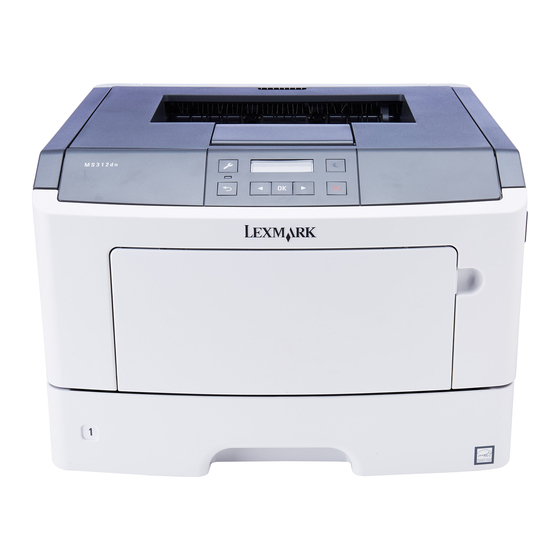
Lexmark MS312 User Manual
Hide thumbs
Also See for MS312:
- Service manual (343 pages) ,
- User manual (226 pages) ,
- Manual (110 pages)
















Need help?
Do you have a question about the MS312 and is the answer not in the manual?
Questions and answers